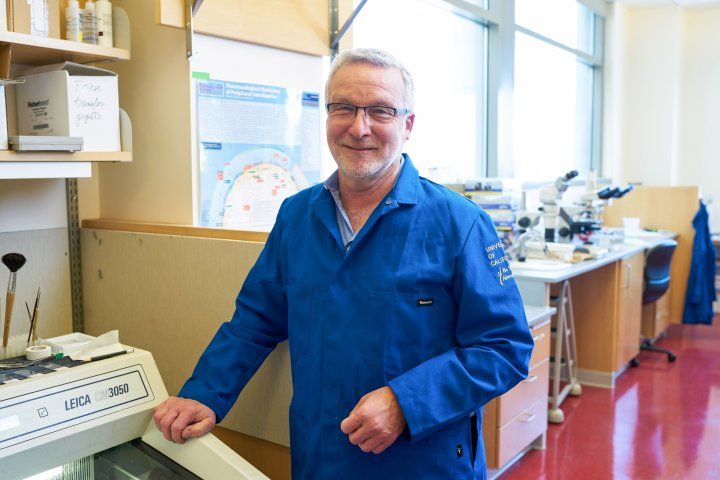Allan Basbaum Elected to National Academy of Sciences

Allan Basbaum, PhD, FRS, studies the pathways underlying pain and itch. Photo by Steve Babuljak
Allan Basbaum, PhD, FRS, chair of the Department of Anatomy at UC San Francisco, has been elected to the National Academy of Sciences, one of the highest honors accorded to an American scientist.
Basbaum is among the 100 new members and 25 foreign associates elected this year in recognition of their distinguished and continuing achievements in original research.
This year’s class brings the total number of past and present UCSF members of the esteemed scientific academy to 56.
Basbaum studies the pathways underlying pain and itch. His laboratory has examined the mechanisms through which tissue and nerve injury produce changes in the peripheral and central nervous system, resulting in persistent pain. They also examine the circuits through which certain substances induce itch. For these studies, the laboratory developed transgenic mice that enable complex neuronal circuits to be traced and analyzed, allowing examination of the extent to which pain and itch circuits are segregated or convergent. Earlier work by his team defined the mechanisms through which opioids exert their pain relieving effects. In recent work, Basbaum has shown that transplanting embryonic cortical GABAergic precursor cells into the spinal cord can ameliorate the persistent pain and itch associated with nerve damage.
Basbaum arrived at UCSF in 1977 as a post-doctoral fellow and has chaired the anatomy department since 1997. He is a fellow of the American Academy of Arts and Sciences, the Royal Society of the United Kingdom, and the American Association for the Advancement of Science, and is a member of the National Academy of Medicine.
The National Academy of Sciences is a private, nonprofit institution that was established under a congressional charted signed by President Abraham Lincoln in 1863. It recognizes achievement in science by election to membership, and – with the National Academy of Engineering and the National Academy of Medicine – provides science, engineering and health policy advice to the federal government and other organizations.
The new members will be formally inducted during next year’s National Academy of Sciences annual meeting. Further information can be found at the Academy’s website.